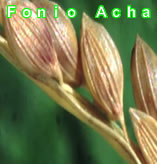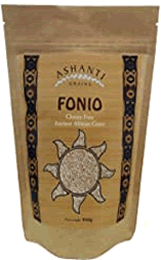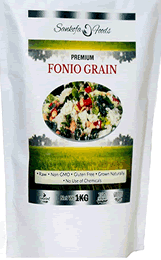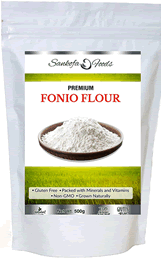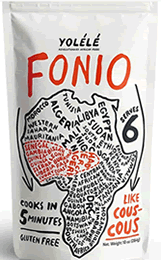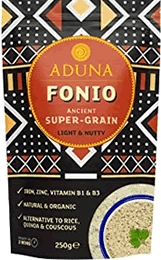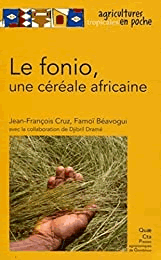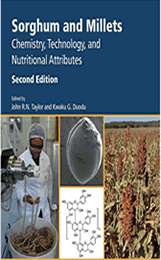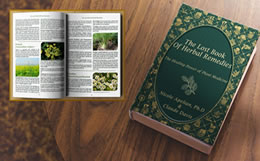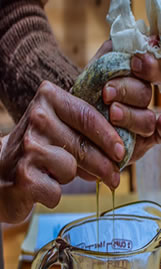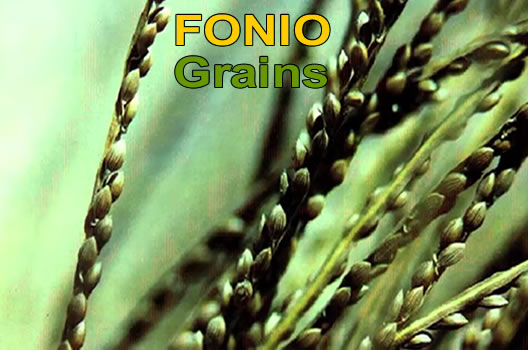
Fonio has a lacy appearance. It is often less than knee high. For a crop that is thus very low understood to science, fonio is exceptionally widely grown. It is employed throughout a huge sweep of West Africa, that come from the Atlantic coast well-nigh to the boundary with Central Africa.
Another name for fonio
Bambara: fini
Benin: podgi
Burkina Faso: foni
English: hungry rice, hungry millet, hungry koos, fonio, fundi millet
French: fonio, petit mil (a name also used for other crops)
Fulani: sereme, foinye, fonyo, fundenyo
Gambia: findo (Mandinka)
Guinea: pende, kpendo, founie, pounie
Ivory Coast: pom, pohin
Mali: fani, feni, founde
Nigeria: acha (Digitaria exilis, Hausa); iburu (Digitaria iburua, Hausa); aburo
Senegal: eboniaye, efoleb, findi, fundi
Togo: (Digitaria iburua); afio-warun (Lamba); ipoga (Somba, Sampkarba); fonio ga (black fonio); ova (Akposso)
How to Cook Fonio? | How to Cook Acha? | How to Prepare Acha?
What is Acha in English? Acha in english is called Fonio or Hungry rice. Like most cereal grains, fonio should be rinse
before cooking to wash away the husk outer part of the grain called shaft.
When you purchase a husks fonio most of the shaft has already been removed through the milling process, but you still wants to
rinse your fonio to remove any remaining particles.
Step 1: Measure any desire fonio into a bowl.
Step 2: Add a glass to cover the fonio by several inches. Wait to see the grain settle to see the husky or shaft particles
floating on top of the water.
Step 3: These can simply be pour off. You can rensing it a second time if you want. Swanley the water a bits. If your fonio
recipes called for the fonio been drain, be sure to use a fine-mesh sieve or strainer. Pour out the water.
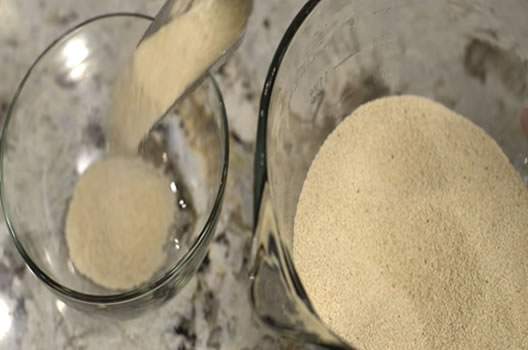
What is gluten?
Gluten is a starch. Starch is carbonic acid. Any grain that is made such as corn, wheat, rice, etc., these things are starch.
Starch is not food. Starch is a chemical.
Gluten will clogged and rust in the systems down. Gluten will rob you of iron and deliver Sulphide
(or Sulfide) in your body, and sulphide is what causes cancer in your body. This is the main reason you should eat a gluten-free foods
Nutritional value of hungry rice?
Do you know that there are two types of food upon the face of earth?
1. Foods that are Alkaline Based and;
2. Foods that are Acidity Based.
Foods that are alkaline based come with creation, from the universe and are made by God.
And foods that are acidity based are made by man-kind in the laboratory.
Acidity based foods are starchy foods and are gluten.
Acidity Based
Acidity food is made from either combinations of Arsenide, Cyanide, Antimony and Mercury.
Alkaline Based
While Alkaline based foods are starch-less, gluten-free and is natural.
Foods that are alkaline in nature have structure Carbon, Hydrogen and Oxygen combine together as one.
Alkaline food are made from either combinations of Phosphates, Carbonates, Iodides and Bromides.
Nutrition
Inorganic Iron such as Ferrous Oxide cannot be assimilated (a commonly used form of Iron that comes directly from a mineral, again an inorganic substance).
Acha Food | Acha Health
It is contained only in living structures, and is therefore ORGANIC. Organic means that Iron is in combination with Carbon(C), Hydrogen(H), and Oxygen(O). This is the chemistry of Life.
Having this type of chemistry C, H, O (Carbon, Hydrogen and Oxygen) enables Iron Phosphate to assimilate well in the body.
Hippocrates - Father of modern medicine said... "Food should be thy medicine and medicine be thy food"
What is the medicine of the ancient past? Hippocrates probably learn his craft from the Ancient Africans. It is fair to say during the Hippocrates time, there are no acidity foods. This is because it does not exist!
African Grains is not
West African Rice Company
Africa has quietly nurtured and supported the world's sciences for centuries. Now, she demands that
we her children, return home to our place of genesis; the path to good health and full life.
This website http://www.fonioacha.com (or fonioacha.com) commitment is to reconnect people of African ancestry with African cultural traditions of using
natural foods such as African fonio and vegetation cell food (a.k.a. electric cell food) as a way of understanding basic healing
principles of natural reversal and elimination of disease.
While the manifestation of disease can be caused by mechanical means (i.e. mental and/or emotional
stress, poor eating habits and nutrition, repressed emotions and/or sleep deprivation as well as extrinsic poisons)
the damage is to a natural biological structure.
This indicates that the approach has to focus on the natural biological structure; and, the approach to
reversing and eliminating severe nutritional deficiency and mineral imbalance, requires a "wholistic"
treatment process that addresses an individual’s genetic, biochemical and electrical structure.
"A society that keeps cures a secret so they can continue to sell medication for huge profits is not a real society but a huge mental asylum" - Dr. Sebi The Great -
Ancient African Foods
They also eat sesame seeds or hemp seeds. All this foods are alkaline and fonio is an organically grown grain!
Where is fonio grown?
Acha fonio grows mainly at countries such as Benin, Burkina Faso, Gambia, Ghana, Guinea, India, Mali, Niger, Nigeria, Togo, Senegal and Sierra Leone.
Fonio grows very fast, germinating within a week after planting and be ready for harvest in as little as four months after germination. It is said to do well in all types of soli even though other cereals will not survive. There are three varieties of fonio:-
- Black fonio (Digitaria iburua) – grows mainly in Benin, Jos-Bauchi Plateau of Nigeria, Ghana, Fouta Djallon Plateau of Guinea, Mali, Senegal and northern regions of Togo.
- Ryerson fonio - grows mainly in India
- White fonio (Digitaria exilis) – It can be found in farmers fields in Benin, Chad, Ghana, Guinea, Mali, Niger, central Nigeria, Senegal and Togo.
Also, fonio can be used to make porridge or fonio cake, floor, bon appetit, fonio au micro onde and paddy.
Foods and Body Minerals
(Recommended dosage & Uses)
Food such as fonio acha grain can boost your mood and energize your body with its minerals.
Dr. Sebi told us that "We receive life in the alkaline world."
It’s not surprisingly that the essential food we eat and ingest minerals should be alkaline in nature, and should be
responsible for giving life to plants, nourish our own cells and energizing our body.
Typically a human body parts requires a few forms of the minerals: Major and Trace.
| Major Minerals | Trace Minerals |
|---|---|
| Calcium | Boron |
| Magnesium | Chromium |
| Phosphorus | Copper |
| Potassium | Fluoride |
| Silicon | Iodine |
| Sodium | Iron |
| Sulphur | Lithium |
| Manganese | |
| Molybdenum | |
| Selenium | |
| Vanadium | |
| Zinc |
The minerals function as pieces of the body parts enzymes. At a minimum eighteen minerals certainly are vital for maintaining healthy blood, bones and also organs.
Major minerals certainly are nearly all abundant in the body parts and also certainly are necessary for the majority of body parts functions and also organ health.
Trace minerals certainly are similarly horribly vital for a human health. Because they're found in soil, foods and also our bodies in smaller amounts, they're significantly more very easily depleted.
When mineral deficiencies occur, vital functionality in the body parts won't work as expected or unique substances our bodies needs won't be produced.
For example, iodine should be necessary for the recommended function of the the thyroid gland, iron should be necessary for healthy red blood cells, and also people must adequate volumes of the zinc for recommended immune function.
Do you know which essential mineral might be missing from your diet? Answer: Magnesium
Found mostly in plant foods/meals: grains, legumes, vegetables, nuts and seeds, magnesium should be same at the plant’s chlorophyll molecule as to iron in a human hemoglobin.
Magnesium vitamins/supplementation can possibly assist through substandard sleep, anxiety, menstrual and also muscle cramps or it could spasms, boisterous/high blood pressure, asthma attacks, and also irregular heartbeats.
Fonio Benefits
Fonio have high fibre content and is low in carbohydrates. The carbohydrate in fonio is easy to digest,
and the fibre allows the foods to move easily through the digestive systems.
Fonio is said to contains a good amount of Calcium (Ca), Magnesium (Mg), Phosphorus (P), Potassium (K),
Sulphur (S), Copper (Cu), Iron (Fe), Manganese (Mn), Sodium (Na) and Zinc (Zn).
Not just rich in iron, zinc and magnesium, fonio can be used in place of couscous or rice or even used
to make beer.
In gross nutritional composition, fonio differs little from wheat. In one white fonio sample, the husked grain contained 8 per cent
protein and so, one percent fat. In a sample of black fonio, a protein posts of 11.8 percent has recorded.
The distinction lies at the amino acids this contains. At the white fonio analysis, for example, the protein contained 7.3
percent methionine plus cystine.
The amino acid profile compared to that of whole-egg protein showed that aside from the inferior score of 46 per cent for
lysine, the various other scores had been high:
•72 for isoleucine; •90-100 for valine, •tryptophan, •threonine, and so, •phenylalanine; •127 for leucine; •175 for count sulfur; and so, •189 per cent for methionine.
This final figure indicates that fonio protein contains well-nigh two times since much methionine since egg protein contains. Thus,
fonio has important good chance not only since survival food, yet since a complement for regular diets.
No problem just how all of us cook it, fonio currently offers specific nutritional good things over additional grains.
Fonio is prized all over for the effortless digestibility and does not make human pancreas duct work hard in producing insulin and
low glycemic index.
| Main Components | Value | Essential Amino Acids | Value |
|---|---|---|---|
| Moisture | 10 | Cystine | 2.5 |
| Food energy (Kc) | 367 | Isoleucine | 4.0 |
| Protein (g) | 9.0 | Leucine | 10.5 |
| Carbohydrate (g) | 75 | Lysine | 2.5 |
| Fat (g) | 1.8 | Methionine | 4.5 |
| Fiber (g) | 1.8 | Phenylalanine | 5.7 |
| Ash (g) | 3.4 | Threonine | 3.7 |
| Thiamin (mg) | 0.47 | Tryptophan | 1.6 |
| Riboflavin (mg) | 0.10 | Tyrosine | 3.5 |
| Niacin (mg) | 1.9 | Valine | 5.5 |
| Calcium (mg) | 44 | ||
| Iron (mg) | 8.5 | ||
| Phosphorus (mg) | 177 |
Cereal scientist should analyze the grains to understand what kinds of proteins are present. What are generally the
amino-acid profiles of the different proteins?
Nutritionists should evaluate the biological effectiveness of fonio grains and the products made from them.
There are probably more pleasant surprises waiting to be found.
For instance, protein fractionation is likely to turn up fractions with methionine and cystine levels already
in the high average.
The Acha fonio has an excellent complement to legumes with an exceptional content of sulfur amino acids (methionine plus cystine).
Currently, fonio is not as popular as quinoa in the Western world, but all that is set to change. It is not readily available in healthy food stores. But you may find it in some. You may find it on some suppliers like Amazon, eBay or other places.
The tiny-grained fonio cereal or hungry rice cereal is making a come-back thanks to a new threshing machine called - the Fonio Husking Machine, invented by Professor Sanoussi Diakite of Senegal in West Africa.
For the millions of people in the African continent who are facing food insecurity and malnutrition, acha fonio cereal - grown in over 16 African countries from Cape Verde to Chad, is one of the best solutions to improving health, nutrition, protein and energy across the world.
Fonio (Acha), popularly known as Acha (in Nigeria West Africa) or Hungry rice (in Europe) is one of the oldest African cereals cultivated all around West Africa. It has a rich taste that makes it, best pap fonio/acha for breakfast and a must have in every home.
Fonio or 'hunger rice' grows in very dry conditions but its tiny seed makes threshing and grinding hard work. A new machine called "fonio husking" invented by Sanoussi Diakite in Senegal have put the traditional cereal with its many health-giving properties back on Sub-Saharan menus.
Fonio, a grain famous in West Africa, is often referred to as "Africa’s tastiest cereal". Rich in fibre, fonio is healthy as well as delicious.
This ancient African grain is known for its nutty, delicate taste which the Bambara people of Mali West Africa say "never embarrasses the cook" because it's so easy to prepare.
But for centuries (up to 5,000 years ago), fonio has had a major drawback — hours of pounding and winnowing fonio husks or better still, up to two hours of manual pounding and winnowing is needed to remove the husks from two kilos of grain before it can be cooked and served.
Fonio is extremely prized food, but people are more and more reluctant to prepare it. As a result a machine is needed to remove the husks from the grain and Sanoussi Diakite invented the machine.
THE FONIO HUSKER MACHINE IN SENEGAL
The Fonio Husking machine invented in 1996 weighs 50 kg by Sanoussi Diakite, an engineer and teacher. The Fonio Husking machine has transformed people's attitudes to fonio grain super food, protein and energy for people in every corner of the world.
The husking device costs between US$1,320 and $2,200, depending on the type, automatic or manual, which makes it too expensive for individual households.
However, the governments across Sub-Saharan West Africa have begun buying it to make it accessible to as many people as possible.
Over 200+ of husk-removal machines have been distributed in more than ten countries. Fonio is no longer ignored by the West African media, and there has been a renewal of interest in this grain all over the world now, with many farmers doubling the average terrain they allocate for growing it.
The super foods fonio grains can now be order at the biggest retailer online - Amazon.com or Amazon.co.uk online supermarket and to be prepared for breakfast or lunch or dinner at anytime.
Fonio Harvesting and Handling Machine
Normlly, fonio grain should be handled in traditional or established ways. The plants certainly are usually cut out through a knife or
alternatively sickle, tied into sheaves, dried, and so, stored within cover.
Good production certainly are typically 600-800 kg per hectare, however in excess of 1,000 kg per hectare has been recorded.
In marginal areas, production might drop to be able to below 500 kg and so, going on terribly unnourishing soils could possibly be simply 150-200 kg per hectare.
Traditionally, the grain should be threshed use beating or trampling, and so, it is dehulled inside a mortar. It is difficult and so, time-consuming.
The Acha Fonio Harvesting machine can process 5 kg of fonio grain in 5 to 8 minutes which normally take a day by manual processing.
The Fonio Grain Husking Machine can effectively husks and cleans the fonio grains as they pass through the shifting and flexible paddle which is set on a vertical axis and on top of a fixed plate.
The separation of fonio acha grain and husk is done simultaneously by an incorporated system of ventilation. This process requires just 1.5 kilowatts for power increasing yields by more than 65 percent.
This innovation provides the opportunity to promote fonio flour as a nutritious and healthier food across the whole world not just African continent.
The Fonio hungry rice thrives in latitudes between 8-14 degrees north of the Earth Equator. Fonio grain is easily cultivated in dry savannah regions, mountainous and hilly mountain areas, in nutrient-poor soil, and without the need for land fertilizers or soil pesticides.
Evolving Ancient African Grain!
Evolving ancient African grain? When a child is born, we give him or her Africa tastiest cereal fonio. Also women who put to
bed or have delivered are massaged with fonio acha.
You may wondered - What do I mean when I say the child is given fonio acha grain, is that on the day of the naming ceremony
fonio acha is put into calabash or a bowl used to wash the child's head for shave.
Conversely, as such it is part and parcel of Ancient African tradition. Africans believe good foods in fonio gluten-free grains in their tradition. In many of their events, such as marriages, naming ceremonies, funeral ceremonies, acha fonio is included in the foods served to the guests.
Acha fonio is associated with almost everything that Africans do when it comes to food. Hungry rice (or fonio) has a valuable function
in African ancient tradition as such; want the whole world to know its value and importance.
A few higher institutions in African continent carries out research in nutrition and food, often directed towards malnutrition
of the mother and child. It’s primarily interested in local food, especially the metabolic effects of these foods, such as okra or fonio acha.
Hungry rice or fonio acha can grow in poor soil, with little water, thus it's something you can grow several times in the same year,
and can adapt to various environments.
Fonio grows very fast and germinating within a week
Some African country has more concerns than other arid (of land or a climate having little or no rain; too dry or barren to
support vegetation) countries, where water is an issue, such as Burkina Faso, Mali, Niger, Nigeria, Senegal, and it is a cereal that can
extend over a wide proportion of Sub-Saharan Africa and perhaps the rest of the world.
Acha fonio contains no gluten (i.e. gluten-free); some people are allergic to gluten found in wheat. Its nutritional qualities meet current
needs in terms of malnutrition, for example, but also for future needs such as chronic disease, diabetes, obesity and high blood pressure.
As added advantage, fonio grain cultivation doesn't require any pesticide, which means organic production, and this is what
people want to eat now, going forward into the future as alkaline food.
You can have fonio gluten-free for breakfast (e.g. pap fonio or used it as porridge), lunch (e.g. jollof fonio or rice and fonio)
or dinner (e.g. fonio fufu eaten with various soup like vegetable soup, okra vegetable with stew, melon etc.). It is for all meals.
Acha fonio grain will certainly contribute to the world food supply, which depends on water, and water will become scarce. And small crops that
need little water will have an important role in feeding the 9+ billion people that we will be one day.
We think fonio grain will be popular as it is gluten free and the fact it is drought-resistant makes it a good option for a
future food with global warming.
Keep in mind: FONIOACHA.com & HUNGRYRICE.com is nutritional consultant’s website that makes suggestions relating to
nutrition. None of the information offered here is intended to replace any program that your medical doctor has prescribed for you, nor
does it conflict with any pharmaceutical medication you are taking.
Fonio Foods & Books | Where to buy fonio grain?
Where to buy fonio grain or books about acha fonio? Either way you've come to the right place.
Whether you live in Brooklyn or New York City (NYC) or Toronto Canada or Senegal and looking for yolele fonio,
just hungry sushi rice, fonioacha.com website should be able to help.
Below are good fonio acha books or good place to buy fonio hungry rice acha that we recommended that you can purchase at Amazon.com or
amazon.co.uk
Ashanti Grains Fonio | 500g | Gluten-Free | Non-GMO | Premium Ancient African Grain | Superfood | High Fibre | Easy Digestibility | Nutritious | Dr Sebi Ashanti Fonio Recipes How To Make Fonio?
Step 1. Add oil or butter to pan on medium heat.
Step 2. Add 1 cup of Fonio along with 2 cups of water, a little salt, along with your favourite chopped vegetables and spices.
Step 3. Stir occasionally and cook for 8-10 minutes, or until the Fonio is soft.
Step 4. Remove from heat cover and rest for 5 minutes.
Step 5. Fluff with a fork and serve!
Sankofa Foods Premium Unrefined Raw Fonio Grain| Gluten Free| Non-GMO| Easy to Cook and Digest| Low Glycemic Index | High Dietary Fibre| Great Source of Minerals, Vitamins & Amino Acids. 1Kg Sankofa Foods Fonio Grain Recipes How To Make Fonio?
Step 1. Toast 45g in non-stick or skillet for about 5 minutes over medium heat.
Step 2. Slowly add 1 cup of water whiles you continue to stir until all the water is absorbed.
Step 3. Cover and allow to sit for 10 -15 minutes on a low heat.
Step 4. Use a fork to fluff the grain.
Step 5. Serve it heat or cool!
Sankofa Foods Unrefined Fonio Flour| Gluten Free| Non-GMO| Easy to Digest| Low Glycemic Index | High Dietary Fibre| Great Source of Minerals, Vitamins & Amino Acids | 500g Yolele Fonio | High Protein | Gluten-Free | Fast Cooking | Vegan | African Ancient Grain | Premium Quality | 3 x 10oz (30oz) Yolele Fonio African Supergrain Recipes - Glutee Free How To Make Fonio?
Step 1. 1 cup fonio.
Step 2. 2 cups water.
Step 3. Salt and a little oil or butter.
Step 4. Cook two minutes, rest covered for 5 minutes.
Step 5. Fluff with a fork, serve hot or cold and enjoy!
Aduna Organic Fonio Super-Grain | IRON | ZINC | VITAMIN B1 &B3 | Natural & Organic | Alternative to Rice, Quinoa & Couscous | Ready in 3 mins - 6 x 250g Packs
Aduna Organic Fonio Super Grain Recipes How To Make Fonio on 800W?
Step 1. Place 50g fonio into a bowl.
Step 2. Add 120ml water into a bowl.
Step 3. Cover and cook for 3 mins.
Step 4. Stir and leave for 3 mins.
Step 5. Fluff with a fork and serve!
How To Make Fonio on Cooker?
Step 1. Place 50g fonio and 120ml water into a pan.
Step 2. Bring to a boil.
Step 3. Reduce heat and simmer for 10 mins.
Step 4. Stirring occasionally.
Step 5. Fluff and serve!
How To Make Fonio on Microwave?
Step 1. Place 50g fonio into a bowl.
Step 2. Add 240ml milk into a bowl for 3.5 mins
Step 3. Rest for 2 mins.
Step 4. For hob, use 320ml milk, boil then simmer for 7-10 mins.
Step 5. Stirring often.
Step 6. Add more milk if needed. Fluff and serve!
Jean-Francois Cruz and Famoi Beavogui, "avec la collaboration de Djibril Drame"
- ISBN-978-2-7592-1635-2, ISSN: 1778-6568, Editions Quae, RD 10, 78026 Versailles Cedex, FranceSorghum and Millets: Chemistry, Technology and Nutritional Attributes
- ISBN-10: 0128115270, ISBN-13: 978-0128115275 Publisher: WPACIP; 2 edition (18 Oct. 2018)
It serves as the "go-to" reference on sorghum and millets. Focuses on the nutritional attributes of the ancient grains and covers the history, genetics, breeding, production, grain chemistry, nutritional quality and handling of sorghum and millets.
It focuses on breeding and genomics, grain structure and chemistry, nutritional properties, health-promoting attributes, traditional and modern usage in foods and beverages including gluten-free foods, as well as industrial and non-food applications.Dr. Nicole Apelian ("The Lost Book of Herbal Remedies")
Learn All the Medicinal Plants of North America & Ancient Africa.
A superfood tree has been quietly making its way into many American and African backyards - If you can spot this peaceful invader he'll provide you with food (all parts are edible), water (it can purify it), more protein and calcium than milk, four times the iron of spinach and a LOT more...
